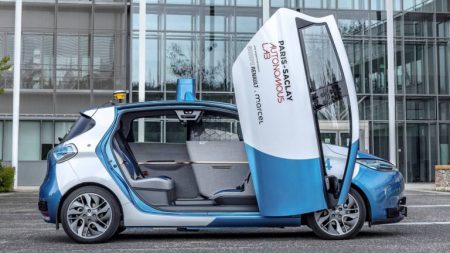As our urban transportation landscape becomes automated over the next decade, it could spark an electric car revolution.
Spend enough time around these early self-driving vehicles and you notice that nearly all are hybrids or pure electric vehicles. They include Ford’s automated Fusion, the similarly equipped Fusion hybrids that Uber is deploying in Pittsburgh, the Google cars bopping around the peninsula of northern California, the Chevrolet Bolts being tested in San Francisco and suburban Phoenix.

Today, hybrids, plug-ins and pure electrics are a marginal piece of the U.S. market, accounting for a scant 2.8% of all new vehicles sold in the U.S. through the first eight months of 2016, according to hybridcars.com.
But a decade from now, electric cars will appeal far beyond the granola-eating, tree-hugging, climate-change evangelizing base that has sustained them thus far. You may not own one, but you will have ridden in them. The change won’t be instant, but it will be steady.
So why will our autonomous future likely be an electric one?
First are the regulatory reasons, namely gas mileage requirements. Then there are engineering reasons — electric vehicles are easier for computers to drive. And, of course, ride-hailing services will increasingly make up a higher percentage of daily miles driven, and it will be easier, cheaper and safer to recharge an unmanned car than to gas one up.
“One of the biggest changes will be in the growing difference in cost of ownership between electrified and internal combustion engines,”
Ford CEO Mark Fields said last week, repeating his company’s pledge to spend $4.5 billion to introduce 13 new electric vehicle nameplates by 2020.
A competition, of sorts, between Silicon Valley and Detroit has been ongoing in the past decade for the engineering and computer programming talent needed to create the next generation of smart, connected and ultimately self-driving vehicles.
The two sides will likely have to work together — either through mergers and acquisitions or strategic partnerships — and electric cars will be the platform.
The federal government’s corporate average fuel economy (CAFE) standards will vary depending on the mix of trucks, SUVs and passenger cars a manufacturer sells, but a substantial portion of electrified vehicles will be needed to achieve the goals.
And then there are the engineering reasons.
“There are a lot fewer moving pieces in an electric vehicle. There are three main components — the battery, the inverter and the electric motor,”
said Levi Tillemann-Dick, managing partner at Valence Strategic in Washington, D.C., and author of “The Great Race: The Global Quest for the Car of the Future.”
“An internal combustion engine contains 2,000 tiny pieces that have to be kept lubricated and they break every once in a while.”
Read more: USA Today
